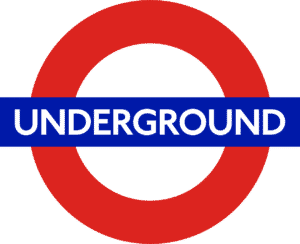About the London Underground
The London Underground, usually referred to as the Tube or the Underground, is a fast commuter transport system that serves Greater London as well as some areas of the neighbouring counties of Buckinghamshire, Essex, and Hertfordshire.

History of The London Underground
The Metropolitan Railway, the first underground passenger railroad in history, is where the Underground got its start. It was first used on January 10, 1863, and is now a part of the Metropolitan, Circle, District, and Hammersmith & City lines.
The City & South London Railway, which began running underground electric traction trains in 1890, is now a component of the Northern line. The network has grown to 11 lines and was used for 296 million passenger journeys in 2020–21, ranking it as the 12th busiest metro system in the world. The 11 lines, which service 272 stops, can accommodate up to 5 million passenger trips per day.
The system's initial cut-and-cover tunnel construction was done just below the surface. Later, smaller, roughly circular tunnels—hence the name "Tube"—were drilled through at a deeper level. The system comprises 250 miles (400 km) of track and serves 272 stations. Despite its name, only 45% of the system is underground; a large portion of the network in London's outer suburbs is on the surface. There are just 33 stations south of the River Thames, and the Underground does not reach the majority of southern Greater London.
The early tube lines, which were formerly owned by various private companies, were consolidated under the Underground brand in the early 20th century. The underground lines and bus services later merged with the surface lines to form London Transport, which was governed by the London Passenger Transport Board, in 1933. (LPTB). London Underground Limited (LUL), the current operator, is a fully owned subsidiary of Transport for London (TfL), the statutory corporation in charge of managing the city's transportation system. As of 2015, passenger tickets covered 92 percent of operational costs. Both the Travelcard ticket and the Oyster card, a contactless ticketing system, were first launched in 1983. 2014 saw the introduction of contactless bank card payments, making public transportation the first in the world to do so.
The LPTB commissioned numerous modernist-styled station buildings, posters, and public artworks. Harry Beck created the schematic Tube map in 1931; it was named a national design icon in 2006 and has since been updated to accommodate additional transportation options such as the Docklands Light Railway, London Overground, Thameslink, the Elizabeth line, and Tramlink. The roundel and the Johnston typeface, both created by Edward Johnston in 1916, are two other well-known London Underground logos.
In the 1830s, the concept of a subterranean railway connecting the City of London with the metropolitan core was put out, and in 1854, the Metropolitan Railway received approval to construct such a line.
In 1855, a brief test tunnel was built in Kibblesworth, a tiny town with geological characteristics similar to London, to prepare for construction. The first underground railway was developed using this test tunnel for two years before it was later filled in in 1861. It began operations between Paddington and Farringdon in January 1863 as the first subterranean railway in the world, utilising gas-lit wooden cars pulled by steam locomotives.
With 38,000 passengers on the first day and the use of trains from other railways to supplement the service, it was hailed as a success. The Metropolitan District Railway, sometimes known as the District Railway, began operations in December 1868 between South Kensington and Westminster as part of a scheme to connect the main-line stations of London via an underground "inner circle." The cut-and-cover construction method was used by the Metropolitan and District railroads to build the Circle line in 1884. Both railways grew, with the Metropolitan eventually reaching Verney Junction in Buckinghamshire, more than 50 miles (80 km) from Baker Street and the heart of London, and the District eventually reaching Ealing, Hounslow, Uxbridge, Richmond, and Wimbledon through the construction of five branches to the west.
Hire Promotional Staff for London Underground Stations
If you would like professional, London Promotional Staff or Sampling Staff for your upcoming activity in a London Underground Station, then get in touch with us today. You can call or email our local London office at the details below.
Additionally, you can also check out a bit more about this office, as well as recent reviews on our Varii Promotional Staff (London) Google Business Profile.
Want to read about other stations on the Underground? Check out the map of the London Underground.

